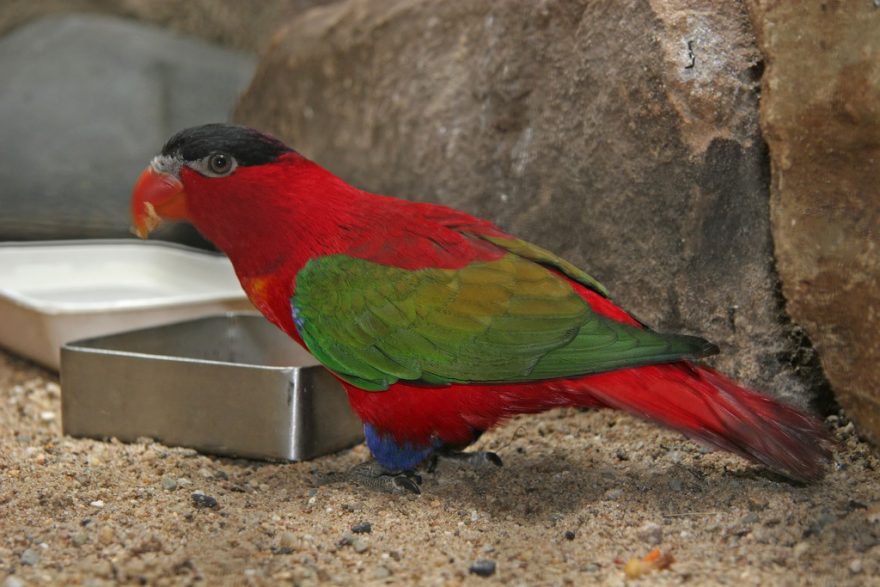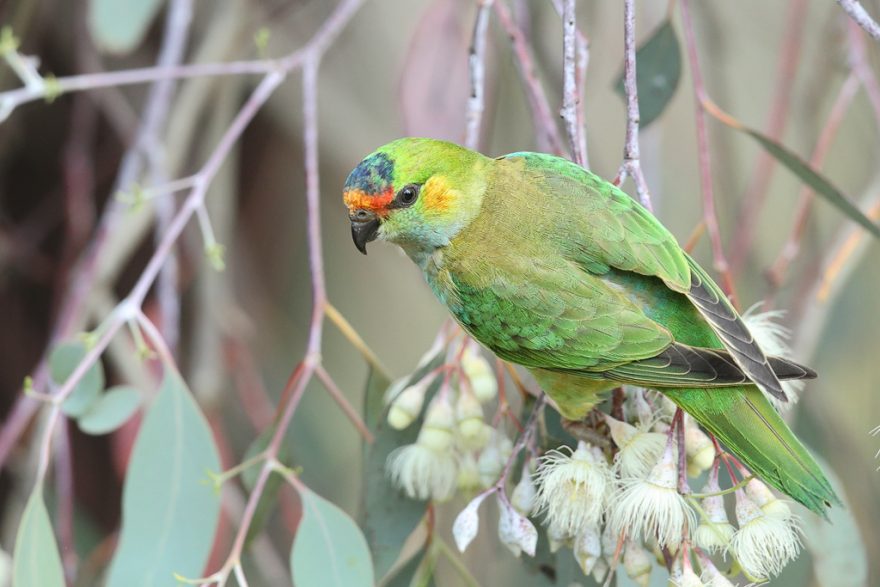Lorikeets and lories are among the most vividly colorful of all parrots. Found only throughout Australasia, these birds have adapted to use a brush tip tongue to extract nectar from trees and flowers. The unusual dietary requirements of lorikeets make them more challenging to keep than other parrot species. Below are some useful tips to keep them happy and healthy in your aviaries.

Drill holes into nest boxes
Lorikeets have a liquid-heavy diet, which means their excrement is also liquid heavy. An active lorikeet nest will produce a lot of waste that can quickly cause the nest box to become damp and even start to rot. The hot, wet conditions form a hotbed for fungus and bacteria which can quickly overwhelm the still-developing immune systems of young birds.
The easiest solution is to ensure that the nest box (or log) has some small holes drilled into the base so that moisture can escape. A larger-than-usual nesting chamber and good aeration can also help to prevent waste from building up.
Remove spoiled food daily
Fresh fruits and nectar comprise a substantial portion of a lorikeet’s diet. These foods all spoil quickly – particularly in warm weather – and can facilitate the growth of bacteria.
Fresh food should be removed within hours of being introduced to the aviary and never left overnight. Dry lorikeet powder can generally be left for 24 hours before spoiling and is a useful food source at times when fresh foods have been removed.

Freeze lorikeet wet food
Instead of preparing a lorikeet wet food mix every day, you can pour the mixture into ice trays and prepare enough to last several days or even weeks.
In hot weather, they can be served in ice-cube form to keep your birds cool. Alternatively, the frozen food can be fed through an ice crusher to make a lorikeet slushie.
Control ants
Lorikeet diets contain a lot of (natural) sugar. Sugar, of course, attracts ants. Residual insecticides such as Coopex are quite effective at controlling ants, but their persistence often requires a multi-layered ant resistance strategy. Residual insecticides, barrier spray, and ant powders should be used in tandem. Identifying and completely eradicating nearby nests may also be required.
Ants aren’t just annoying, they’re known to spread diseases and other parasites. Ants, especially the larger varieties, may attack hatchlings in the lorikeet’s nest.
Add apple cider vinegar to drinking water
A small amount of organic, unpasteurized apple cider vinegar can be added to a lorikeet’s drinking water to help prevent bacterial, yeast and fungal growth in the digestive system. The usual recommended dose is 5-10ml per litre of water offered for one day, once or twice a month.
The vinegar supposedly works by increasing the pH of bird’s digestive system, which provides a little bit of resistance to infection. It has the added benefit of reducing the amount of bacteria and algae that can develop in the water bowl while apple cider vinegar is being offered.